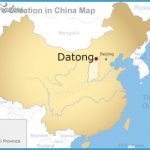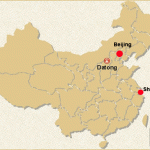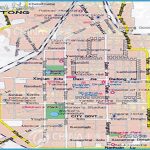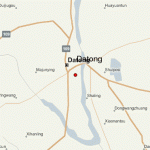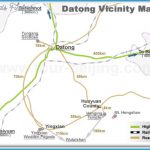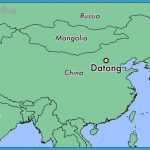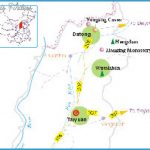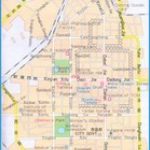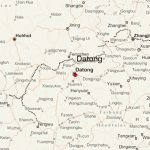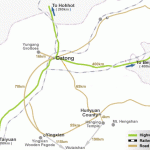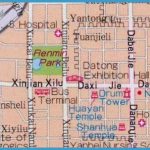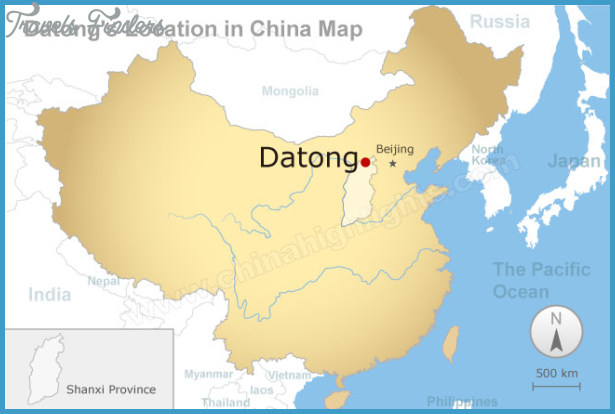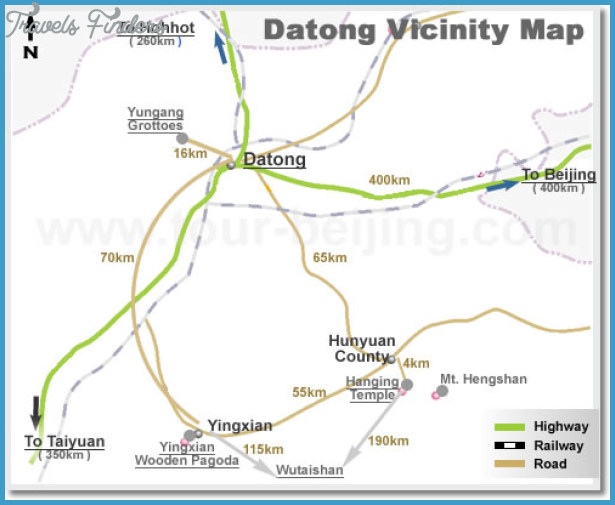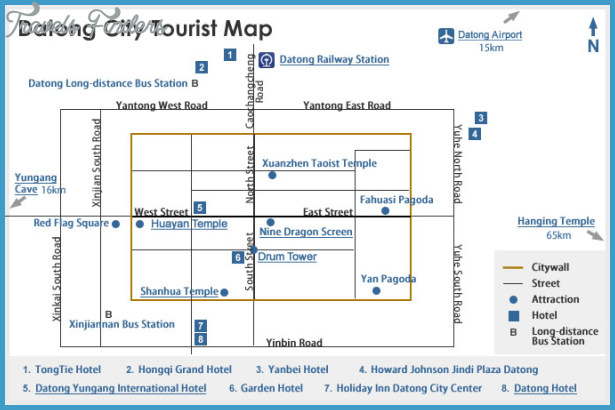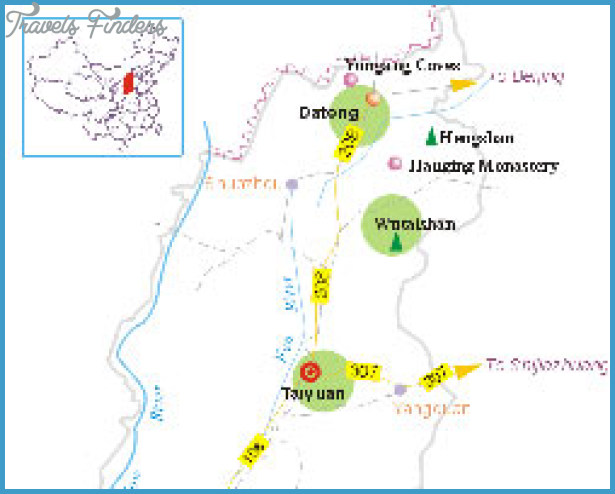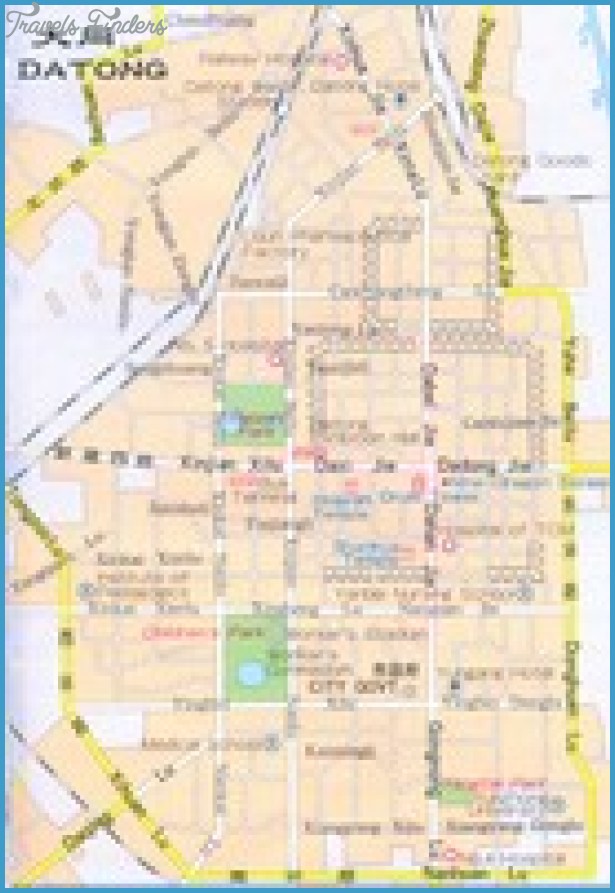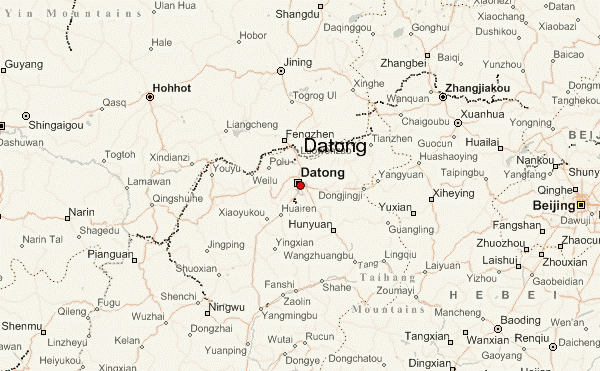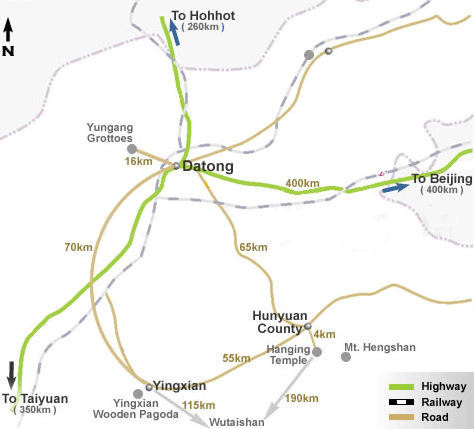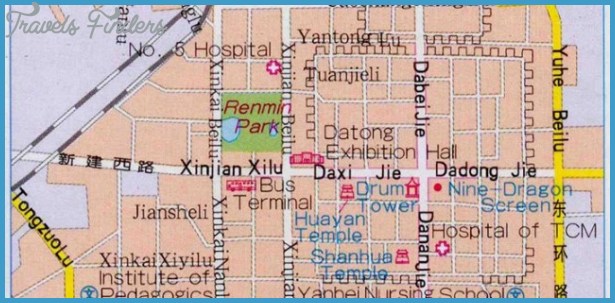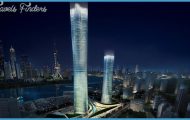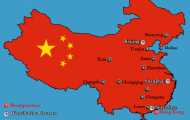Province: Shanxi
Altitude: 1216m/3990ft
Population: 605,000 (conurbation 896,000)
Situation The industrial town of Datong lies at 113°12’E and 40°07’N, in the north of
Shanxi province on a plain which is shielded to the north and south by two sections ofthe Great Wall of China. There is a rail link between Datong and Beijing.
History It seems probable that Datong was founded in the 5th c. b.c. From a.d. 398 to 495, when it was known as Pincheng, it was the seat ofthe Northern Wei dynasty. Many works of art which can now be seen in the Yungang Shiku Caves date from this period. Underthe Ming dynasty (1368-1644) Datong became strategically important. The considerable deposits of coal nearby have given Datong the name of the “Coal Capital”; agricultural machinery is another important branch of industry here. The Huayan Monastery, to the west of the town centre, is one of the few Huayan well-preserved sacred buildings from the Liao period (916-1125). Huayan Monastery was a school of Buddhist teaching, of which there were many at that time. (Huayan Si)
In 1122 the monastery was destroyed and a new building soon replaced it.
In the first half of the 15th c. it was divided into the Lower Monastery (Xia Huayan Si) and Upper Monastery (Shang Huayan Si). It is unusual in that it faces east, an architectural feature unique to the Liao period.
The main hall of the Lower Monastery is the Sutra Temple, dating from Sutra Temple
1036, which served as a library of Buddhist writings. At the time there were (Bojijiao
38 built-in cupboards (made during the Liao dynasty) which housed some Cangdian)
18,000 volumes from the Ming and Qing periods (1368-1911). The 579 volumes which originally existed have been partially lost. In the centre of the building stand three statues ofthe Buddha, surrounded by clay figures.
In each of the four corners a guardian figure in coloured clay sits upon a throne.
The Upper Monastery is structured around the Hall of the Great Hero, which replaces a former 11th c. building burned down in 1122. It covers an area of 1560sq.m/16,785sq.ft, making it one ofthe largest Buddhist temples in China. The wood and clay statues are from the Ming period (1368-1644). There are five Buddha statues as well as some sculptures of minor gods. The heads and upper bodies of the 20 heavenly guardian statues on each side ofthe temple are bent forward about 15 degrees, a feature rarely found anywhere else in China. All the temple walls are painted with frescos; these cover an area of 887sq.m/9540sq.ft and portray the life and works of Shakyamuni, the Dong An at the time of the Emperor Guangxu (1875-1908). The ceiling of 973 panels was decorated in the Qing era (1644-1911) with geometrical patterns and floral decorations.
Another part of the temple houses the Municipal Museum.
The Shanhua Si or Nan Si (Southern Monastery) lies, as its name suggests, in the south ofthe town. Construction commenced in the 8th c. but in 1122 a large part fell victim to the fire of that year. It was rebuilt between 1128 and 1143. Today the monastery comprises the Sumptuous Hall of the Great Hero (Liao period, 916-1125), the Hall ofthe Three Holy Ones (12th c.) and the Puxian Pavilion, or Puxian Ge (1154).
The Sumptuous Hall of the Great Hero contains five statues of Tathagata (one of the ten titles afforded to Shakyamuni) seated on a throne of lotus leaves; each is surrounded by several followers and Bodhisattvas. On each side of the temple stand 24 statues of gods all with different faces. Apart from two guardian statues from the Jing period (1115-1234) all these figures can be attributed to the Liao era (916-1125). Although the wall-paintings are ofthe Qing period (1644-1911) they are based on the style of the Yuan dynasty (1271-1368).
In the Hall ofthe Three Holy Ones, a typical example ofthe architecture of the Jin dynasty (1127-1234), visitors can see the statues ofthe Three Holy Ones, Shakyamuni, Wenshu and Puxian Bodhisattva
The Wall of the Nine Dragons, in Dongjie Street in the town centre, is 45-5m/149ft long, 8m/26ft high and 202m/6%ft thick. It was built in 1392 to embellish the residence of Zhu Gui, the thirteenth son of the first Ming Emperor Zhu Yuanzhang. In 1644 the palace burned down, and the only part saved from the flames was the wall, built of coloured ceramic bricks and decorated with bas- and high-relief. The decorations portray nine dragons flying up to the sun, the symbol of immortality.
The Yungang Shiku Caves, 16km/10 miles west of Datong on the southern slopes ofthe Wuzhou Mountains, stretch for over 1 km/1100yd in an east-west direction. Like the caves at Dunhuang and Longmen, these too house a number of Buddhist works of art which betray Indian and Ancient Greek influences.
There are 53 caves in all containing more than 51,000 statues, the largest being 17m/56ft high and the smallest a mere 2cm/%in, as well as high-reliefs. Most were made between a.d. 460 and 494, on the orders of Emperor Wencheng Di, a practising Buddhist. Ten of thousands of sculptors laboured on this mighty task under the supervision of the monk Tao Yao.
Cave No. 3, the largest ofthe Yungang Shiku Caves, contains a Buddha and two Bodhisattvas, which are rendered particularly interesting by their impressive stance and elegant clothing. From the way they are presented it is thought that they date from the early Tang period (618-907).
Cave No. 5 contains the 17m/56ft high statue of Yungang. The seated Buddha was probably carved in the 5th c. but covered in coloured clay during the Tang period.
In the centre of Cave No. 6 stands a 16m/52!/2ft high column shaped like a two-storey pagoda. It is decorated with numerous bas-reliefs describing the life of Shakyamuni from his birth until he entered Nirvana. Further episodes from his life are inscribed on the east, south and west walls of the cave.
Cave No. 7 contains two stone lions in front of a Figure of the Buddha, and six Bodhisattva statues.
The influence of various styles can be seen in this cave. The way the Indian deities Vishnu and Shiva are portrayed shows an Indian influence, while the guardian with the trident is clearly Hellenistic in style.
An inscription on the east wall of Cave No. 11 indicates that it was built in the year 483. It boasts 95 large stone carvings and numerous Bodhisattva figures in small niches.
Cave No. 12 is noted for its carvings of 5th c. musical instruments.
Wooden Pagoda of Yingxian (Yingxian Muta)
The 13m/43ft tall statue of Maitreya in Cave No. 13 strikes an unusual stance; its hand is supported by a four-armed figure standing on one leg.
Although these two caves are severely weathered they are of interest because of the thousands of small Bodhisattva figures in niches in the walls.
Cave No. 16 which, together with Nos. 17 to 20, is one of the oldest in Yungang, houses a Buddha and five Bodhisattva sculptures. These are more than 13m/43ft tall and portray five emperors of the Northern Wei dynasty.
Cave No. 17 contains a revered statue of Maitreya sitting cross-legged.
This cave houses an impressive statue of Shakyamuni on the robe of which are carved countless small Bodhisattva figures.
Here can be seen another enthroned figure of Shakyamuni which is 16-7m/55ft high.
Cave No. 20 also contains a seated figure of Shakyamuni, this one being 13-7m/45ft tall. This sculpture, which has become the symbol of the Yungang Caves, is a magnificent masterpiece.
Built in 1056, the Wooden Pagoda of Yingxian stands in Yingxian, about 70km/44 miles south of Datong. It is the oldest wooden pagoda in China and a masterpiece of Chinese timber construction. The octagonal building, put together without the use of a single nail, is of impressive height (67m/220ft). On the ground floor the visitor can see a large statue of Shakyamuni and six frescos portraying Tathagata, one of the ten forms in which Buddha appeared. On the third floor is a statue of Bodhisattva with four faces, each looking towards a different point of the compass. The four
The “Hanging Monastery” faces symbolise the immeasurable wisdom of Buddha, whose gaze can pass through any object. In the middle of the fifth floor can be seen a sculpture of a seated Shakyamuni surrounded by eight Bodhisattvas. As the likeness of Shakyamuni is an outstanding one the building is also known as the Pagoda of Shakyamuni (Sajia Ta). 72km/45 miles south-east of Datong soars Mount Hengshan, one of the five mythical mountains of China (the others being MountTaishan in Shandong province, Mount Hashan in Shaanxi province, Mount Hengshan in Hunan province and Mount Songshan in Henan province). At one time it was regarded a a holy mountain, and the Emperors made sacrifices to Heaven here. The highest peak on Mount Hengshan, which is also known as Mountain of the North, reaches a height of 2017m/6620ft.
Various monuments are scattered overthe slopes of Mount Hengshan. The most famous of these is the Hanging Monastery, 5km/3 miles from Hunyuan, which was built near the Pass of the Golden Dragon (Jinlong Kou) on a rock-face 30m/100ft above the valley floor. Constructed in the 6th c. a.d. the monastery consists of 40 small halls and pavilions. The buildings are supported by beams anchored into crevices in the rock-face. In the buildings the visitor can see 80 bronze, iron, terracotta and stone sculptures dating from different periods.

